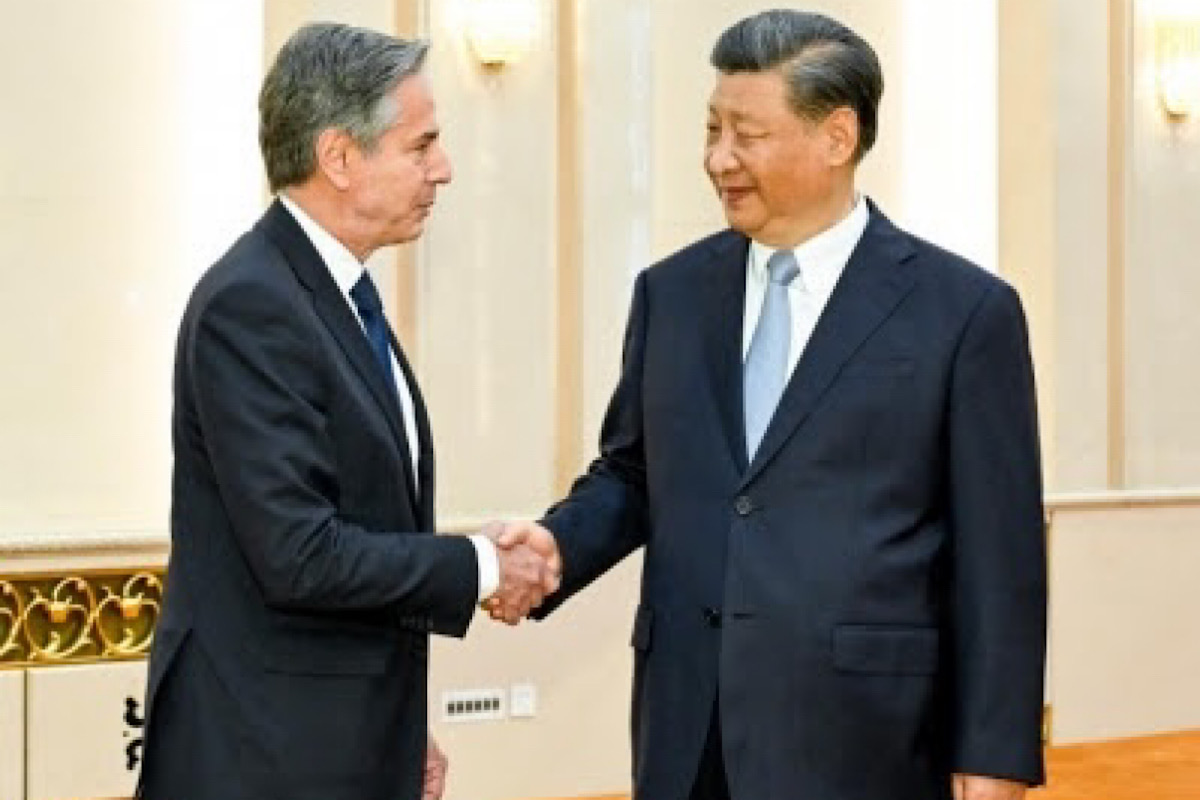There are growing voices in America arguing against an escalation of its rivalry with China, and the US Secretary of State Antony Blinken’s trip to Beijing earlier this week has brought them to the fore. Washington and Beijing’s prima facie diametrically opposed positions regarding the rise of China and its place in the evolving international order “should not be seen as insurmountable barriers to a more stable coexistence between the two countries,” wrote Patricia M. Kim of the Brookings Institute in a recent article. The logic that she and other policy analysts of the same view base their argument on is the fundamental proposition of international relations and great power negotiations ~ the practice of standing firm on one’s own principles while also searching for areas of agreement and mutual interest. Many commentators are now urging US policymakers to adopt this template to continue to serve as a model for the next decades of expected intense Sino-US competition.
In fact, there are very early signs of a possible reassessment of positions on both sides. While Mr Blinken voted with his feet and finally made his long-awaited trip to Beijing which had been put off in the wake of the “spy balloon” incident, the Chinese leadership despite its rhetoric appeared just as keen to restore high-level exchanges and stabilise the bilateral relationship. According to Kim, Mr. Blinken’s meetings with Foreign Minister Qin Gang, its top diplomat Wang Yi, and President Xi Jinping, indicated a clear division of labour among Chinese leaders. The Blinken-Qin meet was described in the least polemical, most business-like tone; the Chinese press release included a list of agreements between the two sides such as a follow-up visit to the USA by Mr Qin, the resumption of issue-specific working groups, and the expansion of people-topeople exchanges and passenger flights between the two countries. Mr Qin, as the head of the Foreign Ministry, will obviously be expected to manage the follow-on exchanges with the US administration.
Advertisement
Mr Wang, on the other hand, was the “scolderin-chief”. In Chinese media reportage of his meeting with Mr Blinken, Mr Wang is quoted listing Washington’s transgressions, including hyping up the “China threat,” “suppressing China’s scientific and technological advances” through “illegal unilateral sanctions,” and “interfering in China’s internal affairs,” particularly relating to Taiwan. Mr Xi’s role was to play the great statesman, if not yet the great helmsman. The two photos officially released by Beijing show Mr Xi smiling benevolently at Mr Blinken while shaking his hand and sitting at the head of a long table with US officials looking towards him as he speaks. In sum, then, Mr Blinken’s Beijing trip reiterated that there is unlikely to be any dramatic reappraisal of Sino-US ties and intense competition will be their leitmotif for the foreseeable future. Yet, it hints at the fact that both powers may just be preparing to live with each other. Prudence dictates that the rest of the world, India included, proceeds with caution before hitching its wagon to one or the other.











